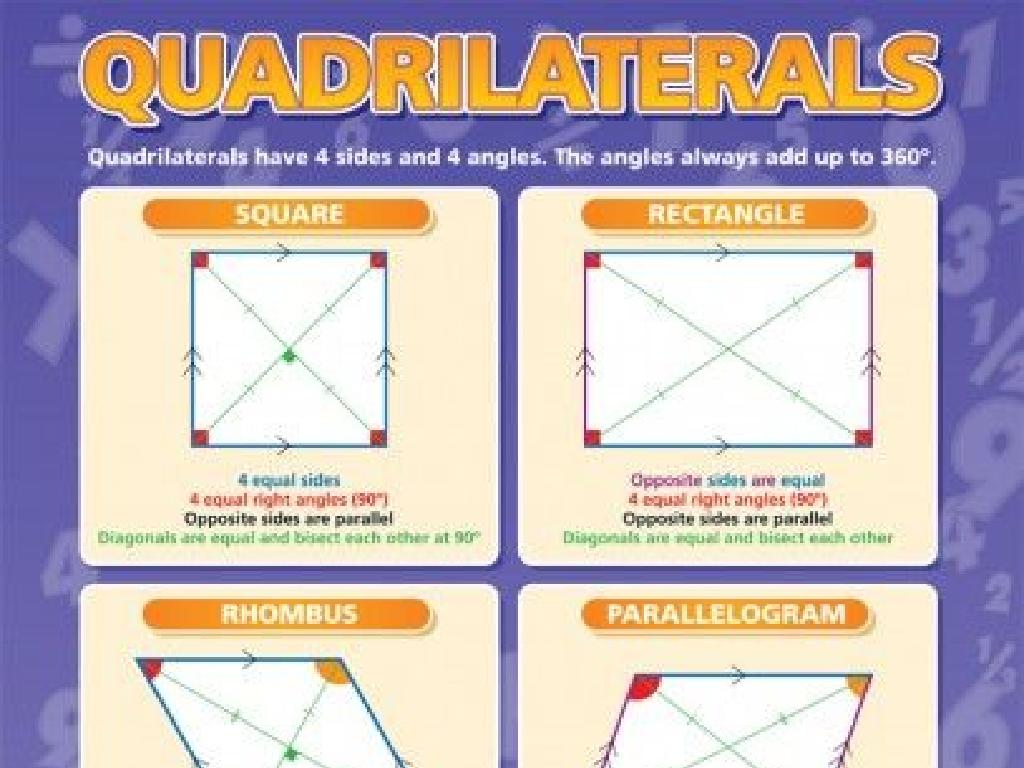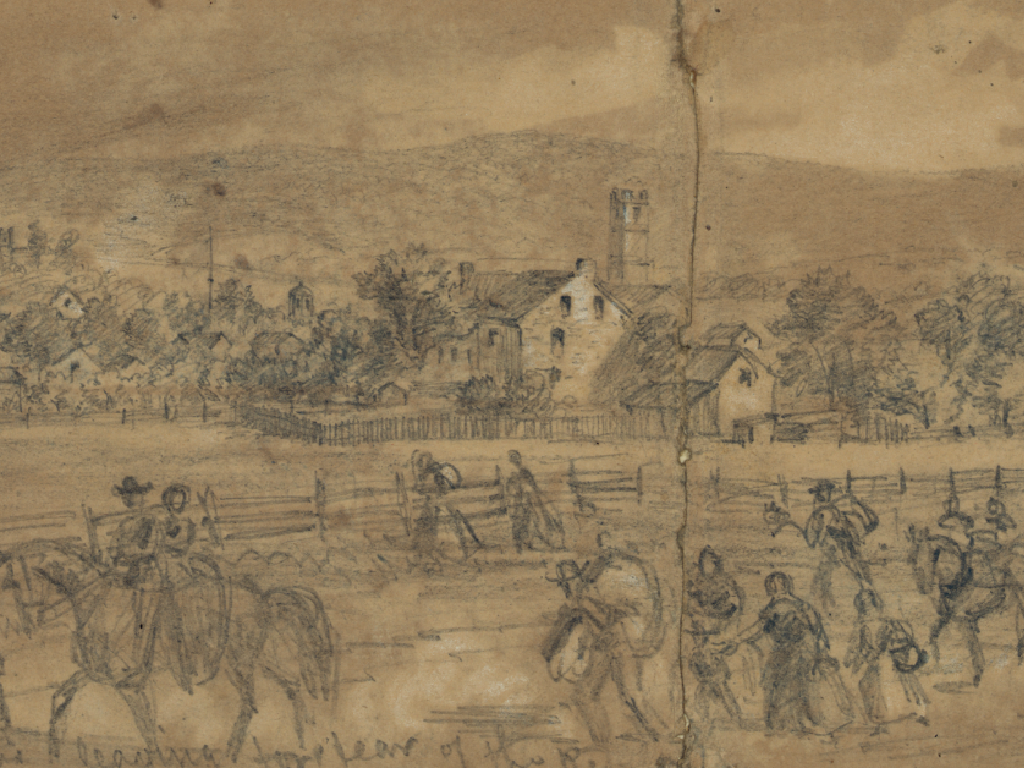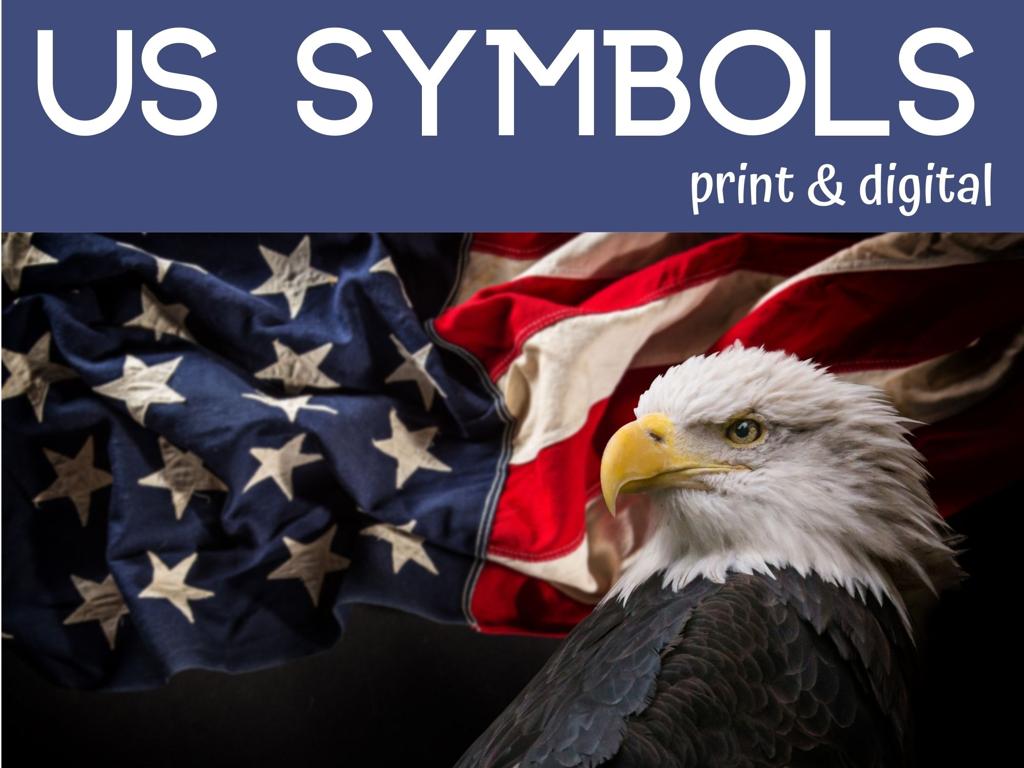Identify An Author'S Statement Of Opinion
Subject: Language arts
Grade: Fourth grade
Topic: Distinguish Facts From Opinions
Please LOG IN to download the presentation. Access is available to registered users only.
View More Content
Distinguishing Facts from Opinions
– What is a fact?
– A fact is something that can be proven true.
– What is an opinion?
– An opinion expresses someone’s beliefs or feelings.
– How to spot an opinion
– Look for clue words like ‘best’, ‘should’, or ‘beautiful’.
– Practice identifying opinions
– We’ll read sentences and decide if they are facts or opinions.
|
This slide introduces the concept of distinguishing facts from opinions, a fundamental skill in language arts. Start by defining a fact as a statement that can be proven true or false. Then, explain that an opinion is based on personal feelings, beliefs, or preferences and cannot be proven. Teach students to identify opinion statements by looking for clue words that often indicate an opinion. Engage the class with examples and encourage them to practice by reading sentences and determining whether they express facts or opinions. This activity will help students critically evaluate statements they encounter in literature and everyday life.
Understanding Facts in Author’s Writing
– Define facts
– Facts are statements that are true and can be checked.
– Facts are provable
– We can test facts to see if they are true or false.
– Facts rely on evidence
– Real data or evidence supports a fact.
– Examples of facts
– ‘The sky is blue’ is true. ‘Seven days in a week’ is a fact because we use this calendar.
|
This slide introduces the concept of facts as part of understanding an author’s statement of opinion. Emphasize to students that facts are things that are true and can be proven. They are not just someone’s belief or opinion. Facts are based on real data and evidence that everyone can agree on. Use simple, clear examples that fourth graders can relate to, such as the color of the sky or the number of days in a week. Encourage students to think of other facts they know and how they can prove them. This will help them distinguish between what is a fact and what is an opinion in future lessons.
Understanding Opinions in Writing
– Opinions express beliefs or thoughts
– They tell what someone thinks or feels
– Opinions are subjective, not factual
– Different people can have different opinions
– Example: Favorite ice cream flavor
– ‘Chocolate is the best ice cream flavor’ shows a personal preference
– Example: Preferred season
– ‘Summer is better than winter’ is someone’s personal choice
|
This slide introduces the concept of opinions to the students. Opinions are statements that reflect personal feelings, beliefs, or preferences and are not based on objective truth. They can differ from one individual to another because they are based on personal experiences and tastes. Use everyday examples like favorite ice cream flavors or seasons to illustrate that opinions are subjective. Encourage students to think of their own examples of opinions and to understand that everyone has their own unique perspectives. This will help them distinguish between factual statements and opinions in writing.
Identifying Opinions in Text
– Authors share opinions in writing
– Clue words reveal opinions
– Words like ‘I believe’ or ‘I think’ signal an opinion
– Differentiate fact from opinion
– Ask: Can this statement be proven true or false?
– Practice with examples
|
This slide introduces students to the concept of identifying an author’s opinion within a text. Emphasize that while facts can be proven, opinions are personal beliefs or feelings. Teach students to look for specific clue words that often indicate an opinion is being stated. Encourage critical thinking by asking whether the statement can be verified. Provide examples and practice sentences for students to apply their new skills, such as distinguishing between ‘The sky is blue’ (fact) and ‘I believe blue skies are the prettiest’ (opinion).
Practice Time: Spotting Opinions
– Read a paragraph as a class
– Find the opinions within
– Opinions are what someone thinks or feels
– Discuss why they’re opinions
– Opinions may not be true for everyone
– Learn to distinguish from facts
|
This slide is for a class activity aimed at helping students identify opinions in text. Start by reading a paragraph together with the class. Then, ask the students to spot statements that express opinions. Discuss each opinion and explain why it is not a fact. Emphasize that opinions are subjective and can vary from person to person, whereas facts are objective and can be proven. Encourage students to explain why they think each statement is an opinion. This activity will enhance critical thinking and help students understand the difference between facts and opinions, an essential skill in language arts.
Group Activity: Fact or Opinion?
– Sort statements into ‘Fact’ or ‘Opinion’
– Discuss reasons for your choices
– Why did you think a statement was a fact or an opinion?
– Prepare to share with the class
– Understand the difference between fact and opinion
– Facts are statements that can be proven. Opinions express personal feelings or beliefs.
|
This group activity is designed to help students practice distinguishing between factual statements and opinions. Provide each group with a list of mixed statements and have them work together to categorize each statement as a fact or an opinion. Encourage them to discuss their reasoning with their group members, fostering critical thinking and collaboration. After the activity, each group will share their categorizations and explanations with the class. This will not only reinforce their understanding but also allow them to hear different perspectives. As a teacher, be prepared to guide the discussion and correct any misconceptions. Offer examples such as ‘The sky is blue’ (fact) versus ‘The sky is the prettiest shade of blue’ (opinion).
Class Discussion: Facts vs. Opinions
– Groups share their findings
– Discuss and classify: Fact or Opinion?
– Why do you think this is a fact or an opinion? Let’s talk about it!
– Understand different viewpoints
– People think differently, and that’s okay!
– Why perspectives matter?
– Perspectives shape how we see facts and opinions.
|
This slide is meant to facilitate a class discussion where students will engage in collaborative learning. Each group will present the statements they’ve identified as facts or opinions. Encourage students to explain their reasoning during the discussion. If there are disagreements, guide the class to analyze the statements together and come to a consensus. Emphasize the importance of understanding different perspectives, as this can influence how we distinguish between facts and opinions. The teacher should prepare to mediate the discussion, ensuring that each student feels heard and respected. Possible activities include role-playing different perspectives, creating a fact vs. opinion chart, and writing down statements from a chosen book to classify.
Your Turn to Write: Facts vs. Opinions
– Write a fact about your hobby
– Express an opinion on your hobby
Opinions often include words like ‘best’, ‘wonderful’, or ‘exciting’.
– Share with a classmate
Discuss why you chose your fact and opinion.
– Use clue words for opinions
Words like ‘should’, ‘better’, or ‘favorite’ hint it’s an opinion.
|
This slide prompts students to engage with the concept of distinguishing facts from opinions through the context of their own hobbies. By writing a fact, they practice identifying objective statements that can be proven. When they write an opinion, they learn to recognize subjective statements that express personal feelings or beliefs. Encourage them to use specific clue words that signal an opinion, such as ‘best’, ‘wonderful’, ‘exciting’, ‘should’, ‘better’, or ‘favorite’. Pairing up with a classmate to share their sentences allows for peer learning and helps reinforce their understanding of the difference between facts and opinions. The teacher should circulate the room to facilitate discussions and provide guidance as needed.
Homework: Spotting Opinions in Articles
– Congrats on learning facts vs. opinions!
– Find an article for homework
– Choose any interesting article you like
– Pick out three opinions from the article
– Opinions may start with ‘I think’ or ‘I believe’
– Think about how you recognized them
– Were there clue words or feelings involved?
|
This slide wraps up the lesson on distinguishing facts from opinions and sets up the homework assignment. Students are tasked with finding an article of their choice and identifying three statements of opinion within it. They should be prepared to discuss the process they used to identify these opinions in the next class. Encourage them to look for subjective language or phrases that indicate a personal belief or preference, rather than a verifiable fact. This exercise will help reinforce their understanding of the difference between facts and opinions and improve their critical reading skills.






